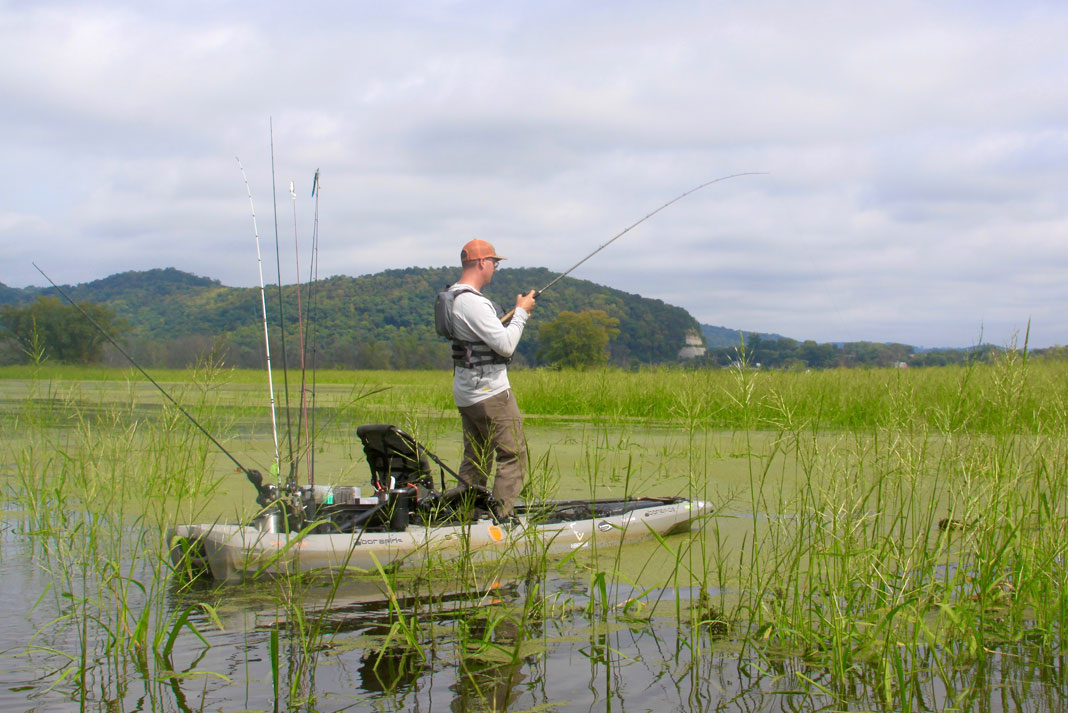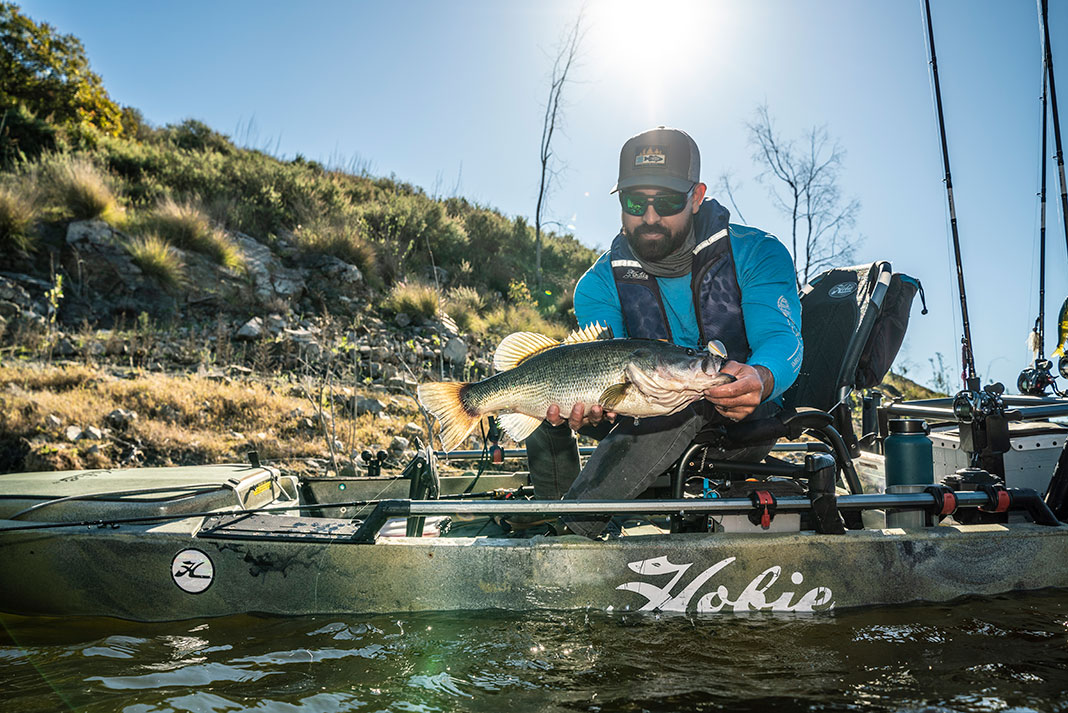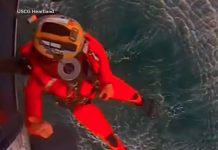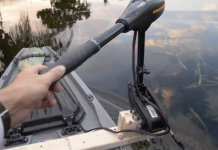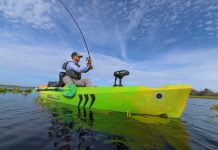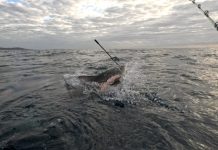View this post on Instagram
Casey Reed was fishing on Hyco Lake in North Carolina when he came across an odd scene—one largemouth bass trying to swallow another bass. Reed recorded the experience, which he shared to social media.
Angler Witnesses Bass Trying To Swallow Another Bass
In the video, both bass are rolled onto their stomach at the lake’s surface. If it weren’t for Reed, the fish would likely have died. Reed pulled the fish from the water to see if he could wriggle them free from one another. The angler comments that it looks like the gill plate of the bass being swallowed by the other bass is stuck. The gill plate acting like a barb to keep the fish from separating.
Reed is able to pry the fish loose from one another and return them alive to the water.
“I tried to revive both of them,” Reed told Outdoor Life. “The smaller bass swam off pretty good after I worked with it a little. The bigger bass seemed more shocked than the smaller one. But I revived it, too, and it looked okay.”
According to the story in Outdoor Life, Reed estimates the larger bass at 17 inches and the smaller bass at 12 inches. Not a bad accidental catch. Reed was fishing in a Central Carolina Kayak Fishing tournament at the time and could have likely gotten away with claiming them as catches. But exhibiting respect for the tournament and sportsmanship, he focused on sending them off safely.
“I just hope they both made it,” he added in the interview with Outdoor Life. “Bass are too valuable to be wasted.”
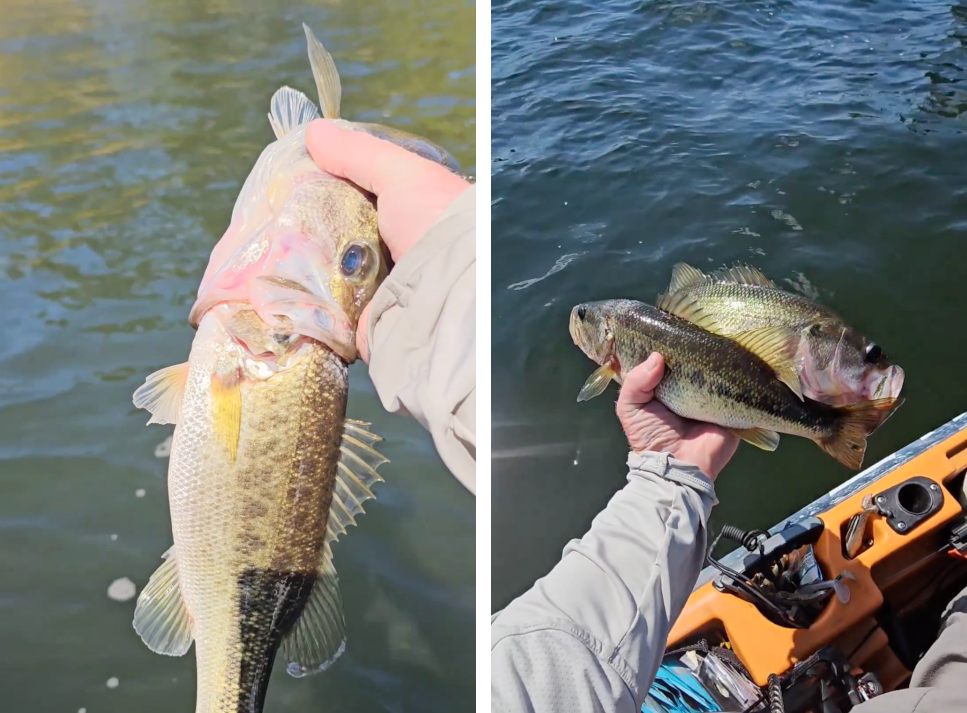
Do Bass Actually Eat One Another?
For experienced largemouth anglers, the scene Reed witnessed may not be shocking in the least. Largemouth are opportunistic predators, wrapping those jaws around anything they can fit—or, in Reed’s case, not quite fit. Largemouth are like the equivalent of the tiger shark scene in Jaws when Richard Dreyfuss pulls a pile of fish and a license plate from the contents of the fish’s belly.
Bassmaster spoke with freshwater fish biologists for an informative article about the diet of largemouth bass. John Odenkirk, with the Virginia Department of Game and Inland Fisheries, studies the overall health of bass populations by inspecting their stomach contents. He says it’s how they gauge how healthy a population is.
“By looking at the various foods in their stomachs, we can determine how well they are eating,” Odenkirk told Bassmaster. “If they aren’t getting big fast enough, we might be able to help them out by providing more food.”
So what does Odenkirk find in the stomachs of bass? The article goes on to say:
“Insects, crayfish, frogs, lizards, snakes, other fish and even baby birds end up on the dinner menu. Bass will even eat each other. The name of the game is survival, and if a bass has to eat another bass in order to live, he won’t think twice about it.”
The voracious appetite has much to do with what makes bass such fun to fish. You may even want to add an imitation largemouth bass to your tacklebox, and a monster may try to swallow it.

